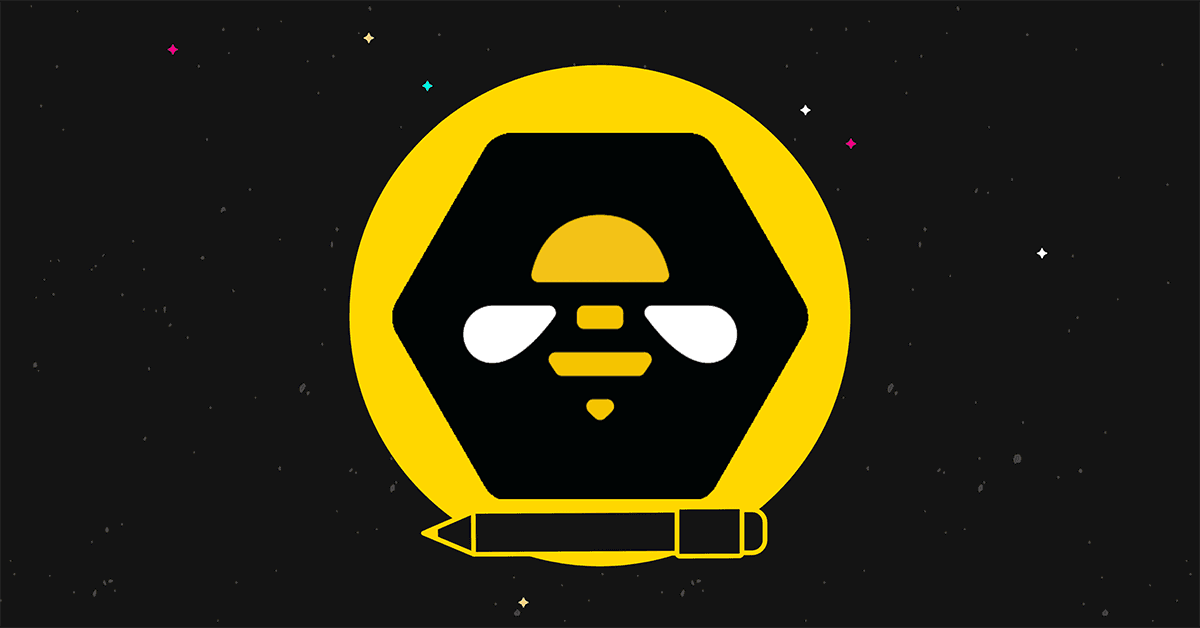Hey there, savvy social media enthusiasts! Are you on a quest to find the ultimate tool to elevate your social media game? Look no further! Today, we’re diving deep into the world of social media management tools to compare two notable contenders: SocialBee and SocialOomph. In the ever-evolving digital landscape, choosing the right platform can be a game-changer for your online presence. Whether you’re a budding entrepreneur, a growing business, or a social media maven, the tool you choose can significantly impact your engagement, reach, and overall social media success. So, let’s cut to the chase and explore which tool, SocialBee or SocialOomph, might just be the secret weapon you’ve been searching for.
| Social Bee | Social Oomph |
|---|---|
 |  |
| G2 Score – 4.8 out of 5 stars | G2 Score – 3.9 out of 5 stars |
| TrustRadius Score – 8.9 out of 10 stars | TrustRadius Score – 8.1 out of 10 stars |
SocialBee vs. SocialOomph: Navigating the User Experience (UX) Maze
In the vast expanse of social media management, navigating through your chosen platform shouldn’t feel like wandering through a labyrinth. A tool’s user experience (UX) is pivotal, as it determines how quickly you can turn your creative ideas into engaging posts without pulling your hair out. Let’s see how SocialBee and SocialOomph stack up in ensuring your journey is smooth sailing.
SocialBee: The Friendly Bee Buzzing with Ease
Imagine a tool that greets you with the warmth of a sunny day, where every feature is intuitively laid out, inviting you to dive right in. That’s SocialBee. With its user-centric design, SocialBee ensures that from the moment you log in, you’re met with a clean, organized dashboard that feels welcoming rather than overwhelming.
Creating and scheduling posts in SocialBee is akin to having a friendly chat over coffee. The process is straightforward, allowing you to craft your messages, attach images, and schedule posts with a few simple clicks. Whether you’re a newbie to the social media world or a seasoned pro, SocialBee’s interface is designed to make your life easier, not harder.
One of SocialBee’s standout features is its content categorization system, which allows you to organize your posts into different themes or topics. This not only helps keep your content strategy tidy but also ensures a balanced mix of posts that keep your audience engaged and entertained.
SocialOomph: The Veteran Navigator with Precision
Now, picture a seasoned navigator, equipped with a compass and map, ready to guide you through the social media wilderness. SocialOomph offers a robust set of features designed for those who appreciate precision and control over their social media management. Its interface might not win beauty contests, but where it lacks in aesthetics, it makes up for in functionality and depth.
SocialOomph caters to the tech-savvy user who prefers a no-frills approach to social media scheduling. The platform may require a steeper learning curve, but it rewards your effort with powerful features that go beyond basic scheduling. For instance, its ability to queue posts according to a predefined schedule allows for meticulous planning and execution of your content strategy.
Moreover, SocialOomph’s advanced features, such as keyword tracking and auto-responding to messages, offer a level of automation that can significantly streamline your social media operations. This makes it an appealing choice for users looking for comprehensive control over their social media presence.
The UX Verdict
When it comes to user experience, both SocialBee and SocialOomph offer distinct paths through the social media management jungle. SocialBee shines with its user-friendly interface and content categorization, making it an excellent choice for those seeking simplicity and efficiency. On the other hand, SocialOomph appeals to users who value depth and precision, willing to navigate a more complex interface for the sake of advanced features and control.
Choosing between SocialBee and SocialOomph in terms of UX comes down to your personal preference and needs. Do you prioritize a clean, intuitive experience, or do you seek advanced functionalities that give you meticulous control over your social media strategy?
Content Creation and Scheduling: The Heartbeat of Your Social Strategy
Both SocialBee and SocialOomph understand that at the core of social media management is the ability to efficiently plan, create, and schedule content. This capability is what keeps your social media heart beating and your audience engaged. Let’s see how these platforms help you maintain that rhythm.
SocialBee: Simplifying the Creative Process
SocialBee takes a holistic approach to content creation and scheduling, making it straightforward for users to maintain an active and engaging presence across multiple social networks. With its intuitive interface, you can easily create posts, attach images or videos, and set them to go live at your chosen times. The platform’s strength lies in its ability to simplify what could otherwise be a complex process, especially when managing multiple channels.
The categorization system is a game-changer, allowing you to organize content into different buckets (e.g., promotional, educational, entertaining) and ensure a balanced content mix. This not only helps in keeping your strategy organized but also in making your feed more diverse and engaging.
Furthermore, SocialBee’s content recycling feature is particularly beneficial for evergreen content, allowing these posts to be automatically rescheduled at intervals, ensuring your best content continues to reach new audiences over time.
SocialOomph: Precision in Automation
SocialOomph offers a robust suite of features geared towards users who desire detailed control over their scheduling and automation processes. The platform is known for its advanced scheduling options, which include setting up queues with specific posting rules and the ability to bulk upload posts for future scheduling. This level of control is ideal for users with a heavy content schedule or those managing accounts across different time zones.
While SocialOomph’s interface may not be as intuitive or visually appealing as some of its competitors, it compensates with the depth of its functionality. Features such as keyword tracking for Twitter and the ability to create automated DMs or replies offer users sophisticated tools to enhance their engagement and reach.
One area where SocialOomph particularly stands out is its support for blog integration, allowing users to automatically share new blog posts across their social media channels. This feature is a significant time-saver for content creators who regularly publish blog content and want to ensure it receives wide visibility.
Crafting Your Content Symphony
In comparing SocialBee and SocialOomph for content creation and scheduling, it’s evident that both platforms cater to different user needs and preferences. SocialBee excels in offering a user-friendly, efficient way to manage and recycle content, making it a great fit for small businesses or individuals looking for simplicity and effectiveness in their social media efforts.
SocialOomph, on the other hand, appeals to power users or larger organizations that require detailed control over their content strategy, with advanced scheduling and automation features that support a more granular approach to social media management.
Your choice between these tools will largely depend on the complexity of your social media strategy, the level of automation you need, and how much control you want over your content scheduling process.

Related: Check out our free SEO suite

Analytics and Reporting: Decoding Your Social Media Success
In the sea of social media metrics, having a compass that points you towards meaningful insights is invaluable. Here’s how SocialBee and SocialOomph fare in providing that guidance.
SocialBee: Insightful Analytics for Strategic Tweaks
SocialBee doesn’t just help you manage your content; it also offers analytics to help you understand how that content performs. The platform provides a straightforward overview of key performance indicators (KPIs) such as engagement rates, reach, and follower growth across different social networks. This information is crucial for identifying what types of content resonate most with your audience and should be produced more frequently.
While SocialBee’s analytics are comprehensive enough for small to medium-sized businesses to glean insights into their social media performance, the platform shines in its ability to make data accessible. For users who need a quick understanding of their social media health without getting bogged down in complex data analysis, SocialBee offers a clear and concise dashboard.
However, businesses or agencies looking for deeper analytics capabilities, such as competitor analysis or detailed campaign performance tracking, might find SocialBee’s offerings a bit limited. The platform focuses on providing essential analytics that help you make informed decisions without overwhelming you with too much information.
SocialOomph: Advanced Reporting for the Data-Hungry
SocialOomph caters to users who crave detailed data and advanced reporting capabilities. The platform offers a robust set of analytics tools that allow you to dive deep into the performance of your social media activities. With SocialOomph, you can track a wide range of metrics, from basic engagement statistics to more nuanced insights like the optimal timing for your posts.
One of the standout features of SocialOomph’s analytics is the ability to customize reports. This is particularly useful for agencies or businesses that need to report to clients or stakeholders, as it allows for the creation of tailored reports that highlight specific metrics or achievements.
Furthermore, SocialOomph’s commitment to providing detailed data extends to features like keyword tracking, which can be incredibly useful for understanding the reach and impact of your content on platforms like Twitter.
Making Sense of the Metrics
When it comes to analytics and reporting, the choice between SocialBee and SocialOomph hinges on your specific needs and how deep you want to dive into your social media data. SocialBee offers an easy-to-understand analytics dashboard that’s perfect for quickly assessing your social media performance and making necessary adjustments. It’s ideal for those who need straightforward insights without the complexity.
SocialOomph, on the other hand, is suited for users who demand detailed analytics and the flexibility to create custom reports. Its advanced features provide a granular view of your social media efforts, making it a powerful tool for data-driven marketers and businesses focused on maximizing their social media ROI.
Pricing
| SocialBee | Bootstrap Plan: Starting at $19 per month for 1 workspace and 5 social profiles. Accelerate Plan: At $39 per month, offering 1 workspace and 10 social profiles, plus additional content categories. Pro Plan: Starting at $79 per month for 1 workspace and 25 social profiles, along with priority support. |
| SocialOomph | Personal Suite: Free, offering basic posting features to a limited number of social accounts. Advanced Suite: Starting at $15 per month, which includes access to more social accounts, advanced scheduling options, and productivity features. Professional Suite: Starting at $25 per month, offering even more connections and features designed for professionals and businesses. Business Suite: Custom pricing for businesses needing extensive features and support for a large number of social accounts. |
Customer Support and Community Engagement: Your Safety Net and Resource Pool
In the fast-paced world of social media, having access to responsive, helpful customer support and a vibrant community can be like having a lifeline in times of need. Here’s how SocialBee and SocialOomph provide support and foster community engagement.
SocialBee: Personalized Support and Engaging Community
SocialBee prides itself on offering personalized customer support. Users can access help through various channels, including email, live chat, and a comprehensive knowledge base filled with useful articles and how-to guides. This ensures that users can find answers to their questions and solutions to their issues quickly and efficiently.
Moreover, SocialBee has cultivated a strong sense of community among its users. Through dedicated social media groups and forums, users can share tips, ask for advice, and exchange ideas with other social media marketers. This not only helps users feel supported but also provides a valuable opportunity for learning and growth. The community aspect of SocialBee encourages users to engage with each other, fostering a collaborative environment where everyone can thrive.
SocialOomph: Focused Support for Streamlined Solutions
SocialOomph offers a targeted approach to customer support, focusing on providing timely and effective solutions to user inquiries. While it may not have as wide a variety of support channels as some other platforms, SocialOomph ensures that the quality of support is high. Users can access support through email, with detailed responses that aim to resolve issues in a comprehensive manner.
While SocialOomph may not emphasize community engagement as much as some other platforms, it compensates with its robust support system. Users looking for direct, issue-focused assistance will find SocialOomph’s support satisfactory. However, those seeking a more community-oriented experience, with forums or groups for sharing insights and networking, might find this aspect lacking compared to other platforms.
The Importance of Support and Community
Choosing between SocialBee and SocialOomph in terms of customer support and community engagement depends on what you value most. If you prefer a platform that not only offers personalized support but also provides a sense of belonging through an active community, SocialBee might be the better choice. Its approach to support and community engagement ensures that users have both the resources and the peer network they need to succeed.
On the other hand, if your priority is streamlined, direct support that focuses on solving your issues quickly and effectively, SocialOomph’s approach may be more to your liking. While it may not offer the same level of community engagement, its commitment to quality support ensures that you have the help you need when you need it.
Conclusion
SocialBee emerges as a strong contender for those who value a user-friendly interface, comprehensive content management features, and a supportive community. Its focus on simplifying social media management through intuitive navigation, effective content categorization, and recycling, alongside robust customer support, makes it particularly suited for small businesses, entrepreneurs, and marketers who seek a blend of efficiency and community support.
SocialOomph, on the other hand, caters to users looking for advanced scheduling options, detailed analytics, and a no-frills approach to social media management. Its strengths in offering precise control over content scheduling, comprehensive data analysis, and focused customer support position it as a powerful tool for experienced marketers, larger organizations, or anyone who prioritizes functionality and data-driven decision-making over a more guided user experience.





















